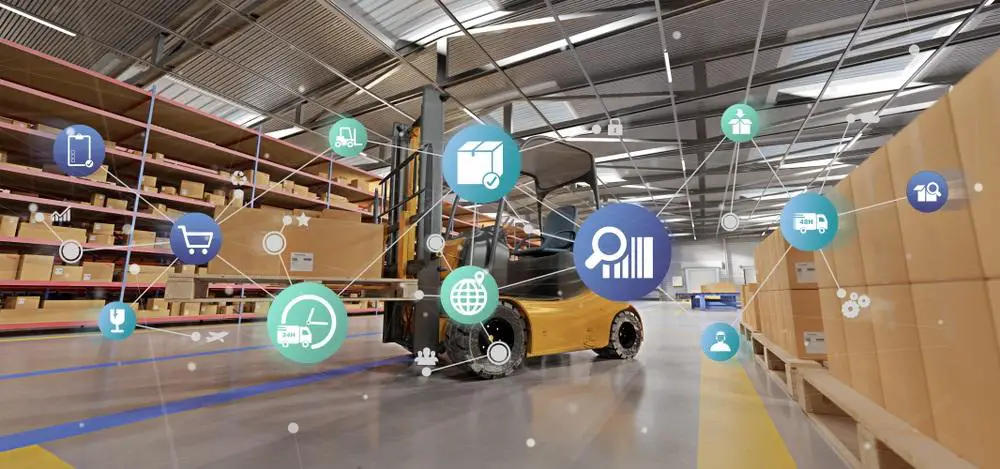
The COVID-19 pandemic brought to the forefront a term many people had heard of, but most did not understand: the supply chain. We quickly learned how important a functional and efficient supply chain is as we were faced with empty grocery store shelves and delayed deliveries. Some goods, such as hand sanitizer, paper towels, and toilet paper, were impossible to find, or if you could find them, you had to pay significantly more — even if you were settling for an off-brand.
If you’ve read a supply chain management blog lately, you know that a supply chain is a very complex collection of logistics processes that must work together to succeed. In this article, we’ll provide a simple explanation to give you a foundation of understanding.
What Is a Supply Chain?
At its most basic, a supply chain is a process of moving goods from point “A” to point “B.” While commerce is the typical supply chain application, supply chains also exist in military and government processes, manufacturing, construction, telecommunications, and other industries.
Goods can include finished products, parts, raw materials, or anything else that needs transporting from one point to another as part of an organizational structure.
For example, every vehicle starts as a set of raw materials. Those raw materials are mined and transported to processing plants and then to parts manufacturers. The parts get moved to the manufacturer of the vehicle. Once the vehicle is manufactured, it is transported from the manufacturer to the sales center.
A customer purchases the vehicle at that point, and the supply chain is complete.
Every industry is impacted by the supply chain in some way. If you work in an office, for example, shortages of printer ink and printer paper could be a concern.
When demand for a product is greater than the available supply, it drives prices up. So you could end up paying twice as much for your printer ink and printer paper, which would have an impact on your overhead costs and your bottom line.
These impacts might be minimal compared to a shortage of essential products like masks and personal protective equipment (PPE). As we experienced, PPE shortages posed significant challenges at the height of the pandemic. Essential healthcare workers were forced to reuse PPE and make do with protective gear that didn’t meet the usual requirements.
Now that we’ve illustrated the importance of efficient supply chains, let’s take a closer look at how a supply chain works.
How a Supply Chain Works?

Within every supply chain, there are many moving parts. Each part contributes something to moving a product from point A to B. Within each supply chain, there are:
- Manufacturing processes
- Warehousing and storage
- Transportation methods
- Compliance measures
- Packaging
- Ordering processes
- Scheduling
- Distribution networks
For example, in a retail setting at a department store, finished goods are purchased from manufacturers and shipped to distribution points or shipping companies. The products then get distributed and transported via plane, trains, and trucks to various points of manufacture or distribution.
The supply chain comprises the processes that work together to bring goods to market. Production, manufacturing, marketing, and merchandising schedules manage those processes. Each works together to get what is needed to its proper destination and ultimately in the hands of the end consumer as smoothly and quickly as possible. Based on my experience, a delay or disruption at any stage of the supply chain has downstream effects with potentially significant consequences.
Supply Chains within Supply Chains
Within every supply chain, there are several waypoints and micro-supply chains. These waypoints have benchmarks, schedules, logistics, and management challenges and processes.
For example, that provider of raw materials takes an order or fulfills a production goal and ships its product to specific locations that use those materials to manufacture parts for a product. The parts manufacturer sends the parts to the product manufacturer, and so on.
Within each of those steps are individual schedules, transportation processes, and other logistics that each play a role in a comprehensive system and must be worked out for the system to work.
Methods of Delivery
Supply chains run on a method of delivery. Many products utilize several delivery methods throughout the manufacturing and distribution process. Any goods you purchase likely traveled via a combination of planes, trains, trucks, and ships at some point in their delivery cycle.
For instance, most products coming from overseas are shipped to ports in the USA and unloaded. They are transported by truck or train to individual supply companies or distribution points. From there, the products are transported by truck or train to a collection point, usually put on trucks and delivered to distribution centers or retail outlets.
While cost is the driver for most transportation processes, speed also influences the decision to use one mode over another. Some transportation processes have faster alternatives, like using a plane to bring goods from China, but the cost is prohibitive, which makes ships a better, albeit slower alternative. In my experience, it’s often a matter of finding the right balance between cost and efficiency.
When we face higher costs to procure raw materials or transport goods, the choice is either to accept the increased overhead and reduced profit margin or pass the higher costs on to the consumer. This is a key driver of rising costs for goods.
Supply Chain Disruptions
We mostly hear about supply chains when they are disrupted. Supply chain disruptions can happen for a variety of reasons, including, but not limited to:
- Bad weather and natural disasters
- Lost merchandise because of accidents on the road, rails, or at sea
- Worker issues like strikes, work slowdowns, or staffing shortages
- Dramatic increases in demand that exceed supply
- Gluts in offloading at transportation or distribution points
- World events, such as a global pandemic
When a disruption happens, most companies have contingencies. However, you must have a contingency plan for every possible scenario. If the disruption causes enough delay, a product’s availability decreases, driving higher costs.
Final Thoughts
Virtually everything you buy has a supply chain that takes it from raw materials to the finished product you are purchasing. Along the way, in most cases, multiple cycles, processes, and schedules worked together to keep delivery on time.







Add Comment